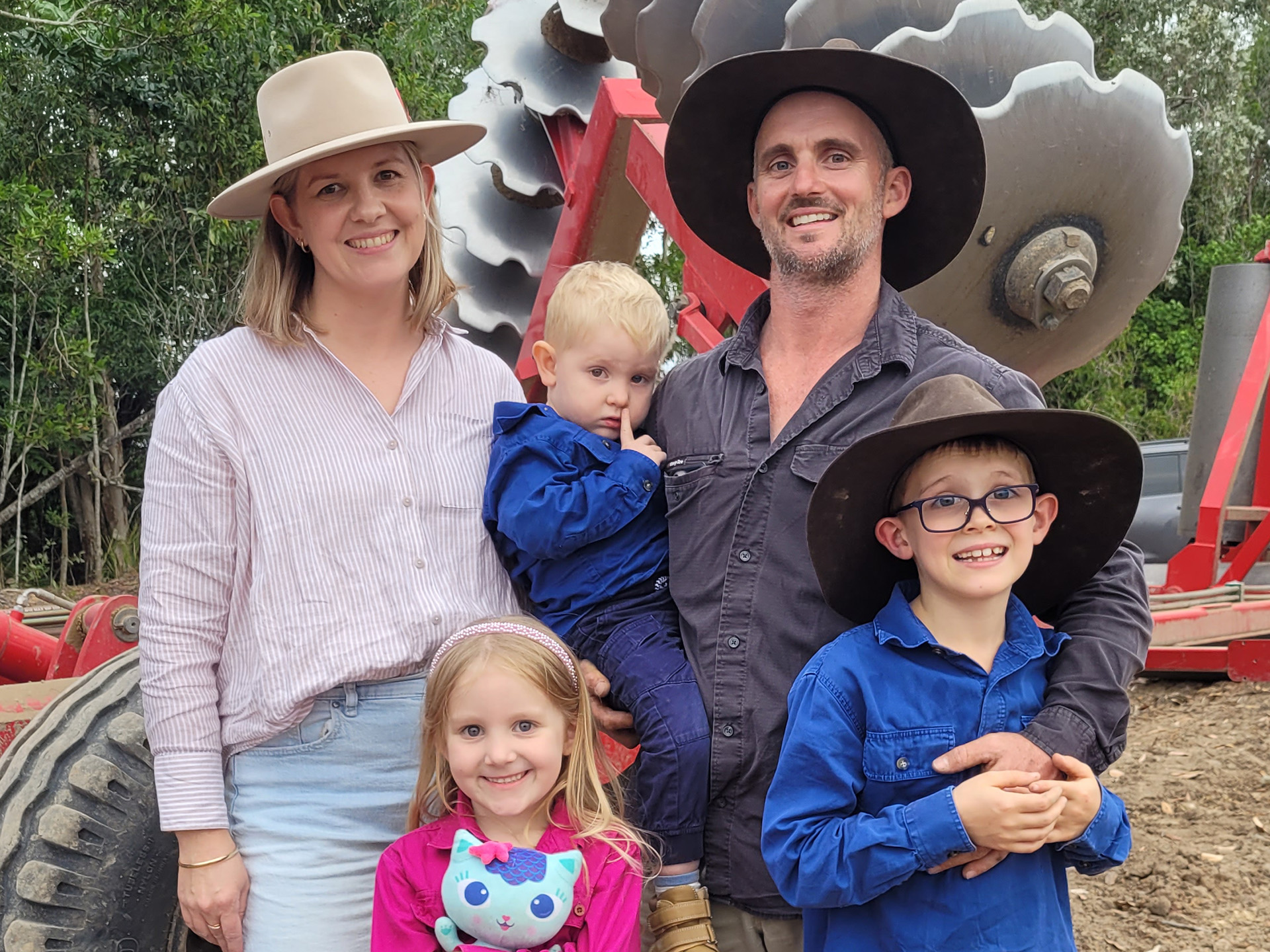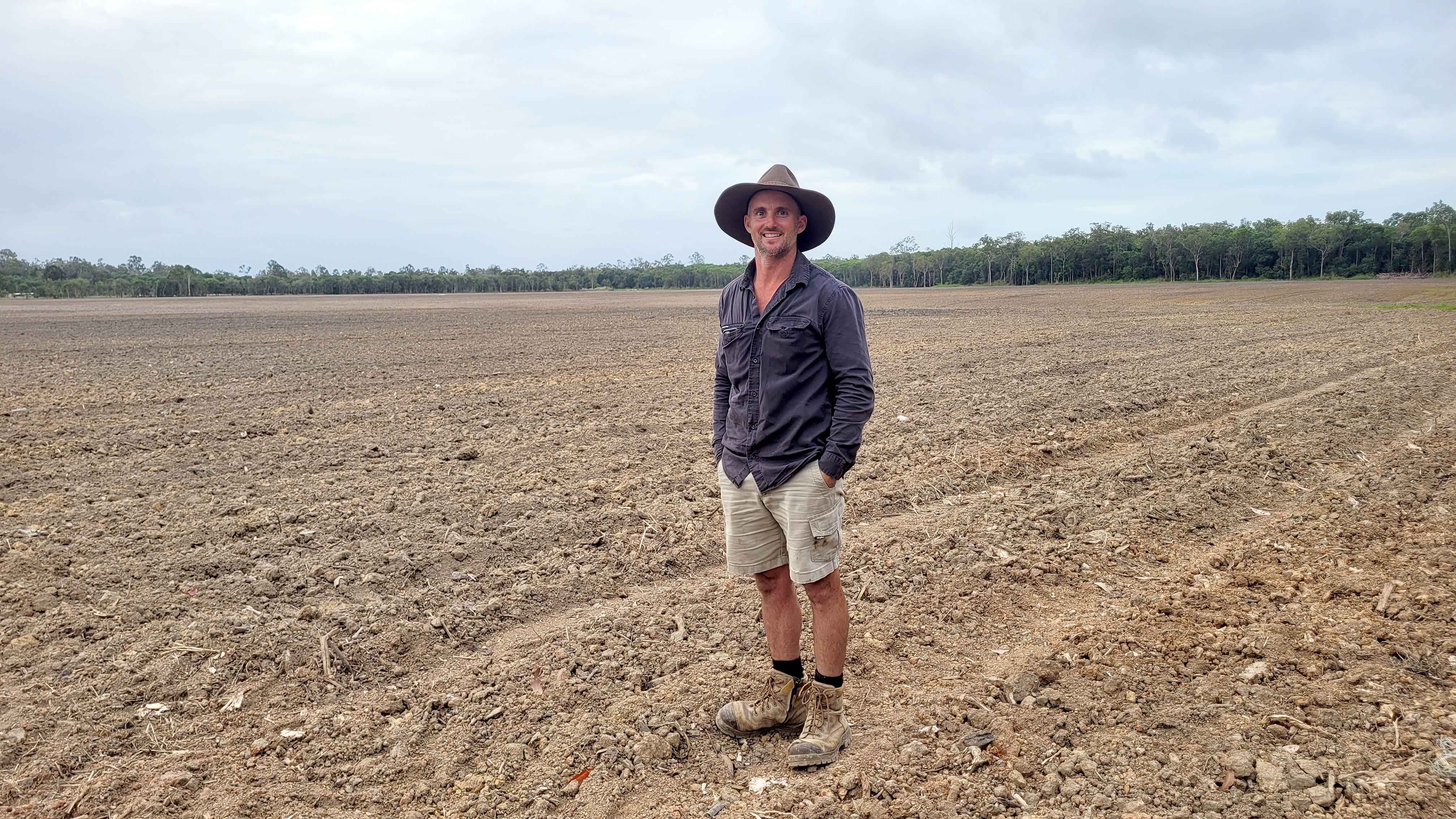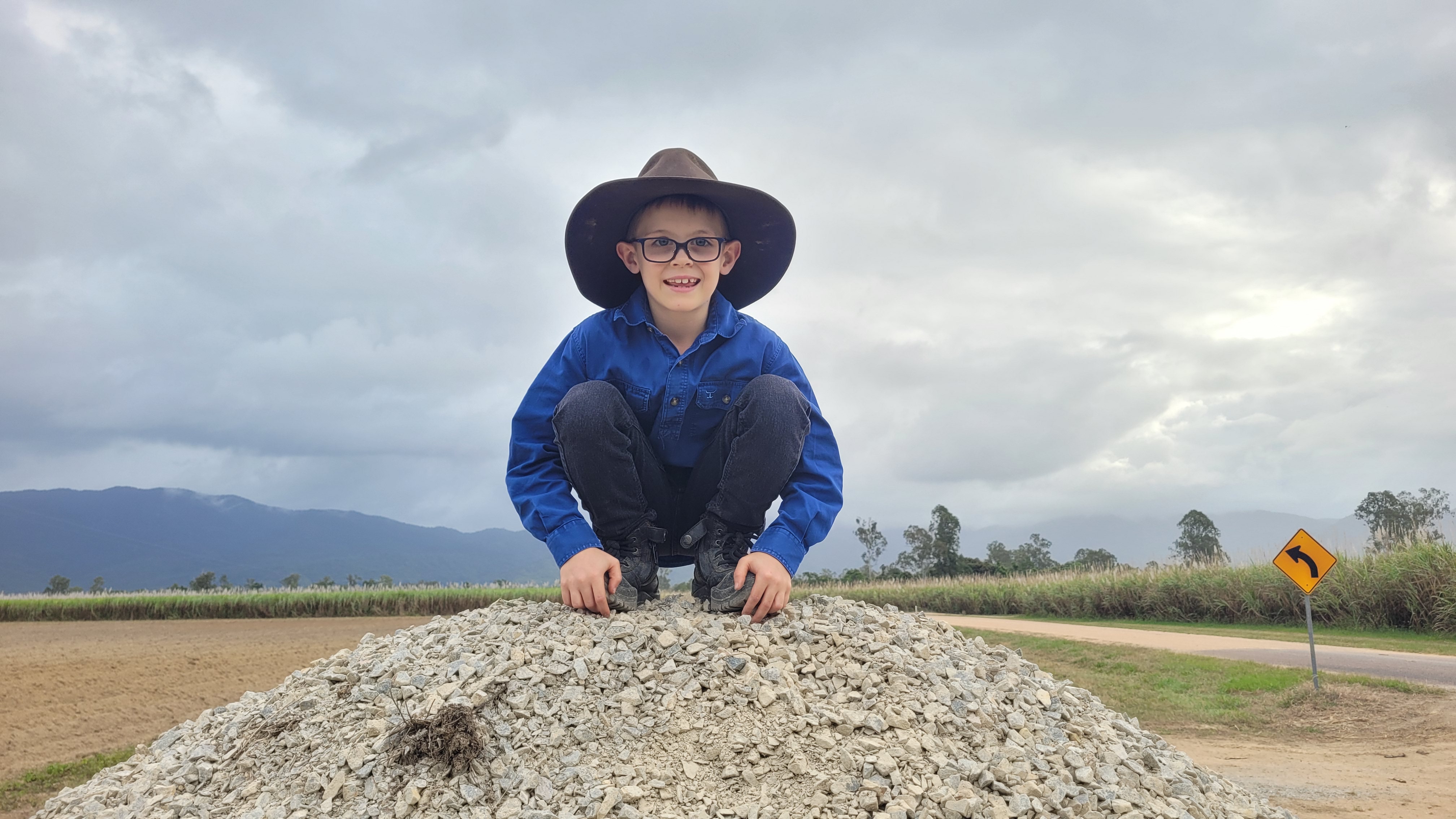
8 minute read
Back to his roots
BY RENEE CLUFF
Adrian Bush has returned to the family farm near Tully, where he’s progressing his father’s legacy.
Following a distinguished stint in the fast-paced, high-pressure mining sector, mechanical engineer Adrian Bush is putting his knowledge and expertise to good use in the sugarcane industry and honing new skills along the way.
Adrian grew up on the family property in the mountain-fringed, picturesque Kennedy Valley, before his mining career took him to Central Queensland and Orange in New South Wales.

The latter role included leading a team of 500 at one of Australia’s largest underground mines. “It was great fun, it was full-on, and I loved it,” Adrian said of the experience. “I had a really big role in a huge operation which was full of energy, it was exciting, and suited me well. We were pulling 32-million tonnes per year from 1.5 kilometres underground which was challenging every day.”
It was a busy 15 years in mining, during which he also married his wife Philippa and together they had three children: Nine-year-old Jackson, sixyear-old Evelyn, and Liam, who is about to turn three.
“Taking the job in Orange was the best move we ever made, it was lifechanging,” Adrian said. “The kids would make snowmen in the front yard every year, so it was an experience you’d never get here.
“In the same way, the decision about the time to come home was unreal as well.
“The kids are at the right age and they love the farm. I had the best life growing up on a farm.
While it was always the plan to return to Far North Queensland, the timing of the move two years ago was prompted by his father’s ill health. Geoff Bush, a stalwart of the sugarcane and banana industries, died late last year and Adrian cherishes the 12 months he was able to spend with his father.
You can never get a better upbringing than being on a farm
A passion project the pair shared was Adrian’s acquisition of a former, unsuccessful teak plantation. Adrian now views the parcel of land as a legacy he can leave for his own children. After being cleared and drainage works completed, the blocks were planted with sugarcane for the first time this year. It was an emotional milestone for Adrian.


“Dad saw the potential and I’m now seeing it through,” he said. “It’s a new challenge and an opportunity. You’ll never get another parcel of land in this area of a decent scale that the kids can also own and continue on.”
Another farm deep in the Kennedy Valley that Adrian purchased with his father a decade ago will now be the location of the family’s new home. A driveway has been marked out and house pad established ready for the build.
In all, Adrian and Philippa now have 380 hectares under sugar and they’ve hit the ground running, even taking out the prestigious Mangrove Jack award at the Tully Productivity Awards last season for best practice farming. The honour recognises sustainable farming that is also productive and profitable.

Initiatives that helped secure the award include the nitrogen (N) reductions through legume fallow cropping, optimised drainage design to reduce sediment run-off and fine-tuned nutrient management planning, which is aided by Adrian’s sister, agricultural consultant Charissa Rixon.
“When it comes to nutrient management planning, it’s data and being an engineer, I really enjoy data,” Adrian said. “There’s lots of stuff I want to trial. I’ve already transitioned from non-GPS – everything’s now run under GPS so we’re running a lot more controlled traffic during the farming cycle.
“My other focus is around variety selection. A huge opportunity is transitioning some of the older varieties and optimising some of the newer varieties in combination with the high-performing older varieties and being smart about soil choice versus variety and harvest cycles. You can spreadsheet the world out of that but in the end, you’ve got to have some experience.
“The challenge for me is not having too many varieties. If you have too many, it becomes an unnecessary challenge. If I can have six or seven varieties, the reality is each year, I’m planting probably two or three varieties and I’m going to have clean seed from the previous year developed to plant out.
“I’m also strong with my legume crops, I’ll always preference fallow over replant. You can see the benefit in the soil.

At the end of the day, you’re trying to maximise the return from your dirt – that’s what we do
Adrian plants a mixture of sunn hemp, cowpea, dolichos lablab and soybean directly drilled in the mound. He’s also planted sunflowers, mainly for the aesthetics.
“Jackson and Philippa love flowers and we had endless flowers on the table, so that’s exactly why I did it,” he said. “They’re not a bad provider of green manure and N but they’re not the same as your sunn hemps for example.”
While Adrian has brought new skills and experiences from his mining background to his farming endeavours, he says the path has been made smoother through the generosity of his neighbours in sharing their knowledge, time and even equipment.
Cousin Graham Bush and neighbour David Singh received special mentions.
“You can’t ask for better neighbours,” Adrian said. “They are always willing to share knowledge or lend me equipment to get the best out of my farm, they just go above and beyond. It is so refreshing to be in a farming area where everyone works together and helps one another out.”
But it hasn’t all been sunflowers and rainbows. One of main challenges they’ve faced as a collective is cane grubs.
“This is an area that’s prime for them because they like the lighter, softer soils that don’t get waterlogged,” Adrian said. “But even some of our heavier soils are also getting some damage.”
A targeted approach to imidacloprid applications has been vital.
“You’ve got to make sure you put it in the right location, the right depth at the right time,” Adrian explained. “Grub pressure comes in very late in the year and if you’ve applied it early in that July/August period, the efficacy can drop out by the time you really need it around January/February, when the grubs are really starting to do damage.
“I’m looking at different application methods to try to get it on later in the ratoons, rather than having to do it when I stool split. For instance, in the corn industry they side dress with a little cultivator and a spray nozzle. It’s definitely economically smart to do something, because I’ll be around 1500 tonnes down this year and I’m definitely not the worst.
“There are a few factors we need to understand better, and it’s no good me doing something here and the neighbour not doing it – you’ve got to work it as a collective and we’re all definitely focused on it because we’re all being impacted.”
Already, Adrian’s had a win on his Dallachy Creek farm.
“It’s a 75-hectare block and I planted 65 of it, so there were only 10 hectares left that hadn’t been affected by grubs over the previous two years,” he outlined. “I made sure when I filled it in, I applied the imidacloprid. Historically, that application would happen at plant but through some of the advice from Sugar Research Australia and CANEGROWERS meetings, it was very apparent that the later you apply it, the better.
“At this stage, we’ve got minimal damage there, so applying the imidacloprid far later and separate to when we planted has been effective. I changed my practice in the nick of time to be honest, otherwise it would have had serious damage.”
As for future farming goals, Adrian has his eye on honing precision management within blocks.
“If I use the mining metaphor, there are many drill holes in an ore body, and I know where the highest grade is and it has to be precise because it’s so expensive to manage,” he said. “In the same way, putting large volumes of fertiliser on a low production area doesn’t make a lot of sense. When it comes to improving areas, gypsum’s a very expensive product when you’re putting a lot on, but you may only need it in a certain area to get the yield potential versus spreading it across the whole paddock.
“We’ve got all the variable rate application gear now, but we just need to be able to overlay that with the actual yield data and then I can make more targeted decisions.
“In the wheat and other broadacre industries, it’s just a given. In the sugarcane industry, we just haven’t had that information placed into a useable, practical format yet by the OEMs (Original Equipment Manufacturers).
“It’s coming.”








